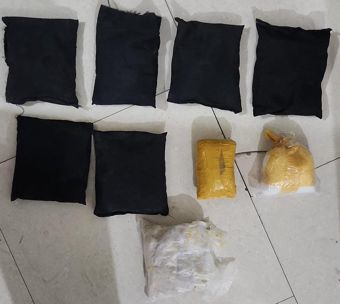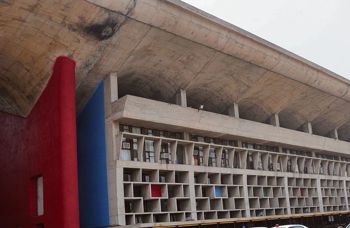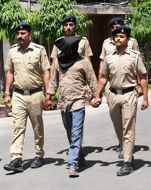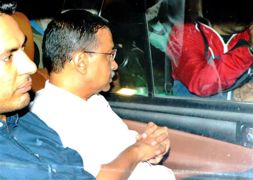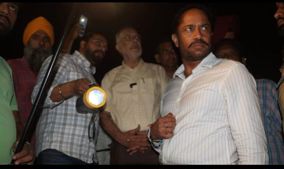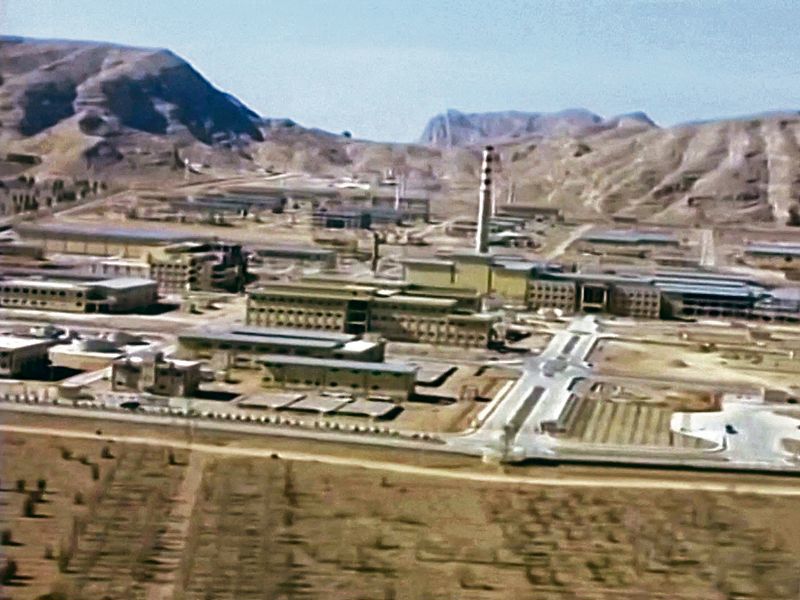
In the spotlight: An aerial view of an Iranian nuclear facility in Isfahan. Reuters
Distinguished Fellow, Observer Research Foundation, New Delhi
WITH the US, Israel and Iran maintaining silence over Israel’s supposedly symbolic counter-strike on Iran, it is difficult to figure out just what exactly is happening.
The message Israel sent out to Iran with its limited strike was that it had the ability to penetrate the Iranian airspace easily and strike at targets deep in the country.
We can interpret some of the actions by the targets chosen. In their massive drone-missile strike of April 13, the Iranians focused on a number of Israeli airbases, principally Nevatim and Ramona. Whether they did cause damage is another matter, but what is significant about these bases is that are adjacent to the Israeli nuclear reactor and facilities at Dimona. Reportedly, on Friday, the Israelis struck at the Khatam airbase outside Isfahan, which houses some of Iran’s nuclear facilities.
Neither side deliberately targeted the nuclear facilities themselves, but there was clear messaging. Two pieces of rocket debris that were found in Iraq suggest that Israel used precision-guided missiles for the strike.
There are some lessons we draw from the two strikes. Israel (with some help from allies) demonstrated an astonishing ability to defend itself and emerge unscathed against waves of drones, cruise and ballistic missiles. On the other hand, the message it sent out to Iran with its limited strike was that it had the ability to penetrate the Iranian airspace easily and strike at targets deep in the country. By landing the first and last blows, Israel reiterated its escalation dominance.
For now, the escalatory spiral seems to have been controlled, but the direct attacks the two sides have carried out on each other’s territory are not a good augury for the future. No doubt both sides will now revert to their earlier shadow war in the region. Both have the incentive to do so — Tel Aviv would not want to be distracted from its war against Hamas in Gaza, and as for Tehran, it realises that its archaic air force and air defence system make it hugely vulnerable in any prolonged war with Israel or the US.
Clearly, Washington was able to incentivise Tel Aviv to limit its strike. First and foremost was the importance of its continuing support, underscored now with talk of a new $1-billion aid package. Second, showing Israel the advantage of shaping a larger regional coalition — Saudi Arabia, Jordan, the UAE and possibly Egypt — against Tehran.
The manifest weaknesses carry the risk of pushing Iran over the nuclear threshold. As is well known, Israel already possesses anywhere up to 90 nuclear weapons. There is a credible report that with the help of South Africa, it also conducted a clandestine atmospheric nuclear weapon test in September 1979. It has also developed the Jericho long-range missile capable of delivering them. Like India, Israel has refused to sign the Nuclear Non-Proliferation Treaty (NPT) as a non-nuclear weapon state.
Israel also has a clear-cut policy that it will not allow its West Asian neighbours to develop such weapons. This has led to Israeli strikes on Iraqi and Syrian facilities that were suspected of being used to develop nuclear weapons as well. An Israeli-US operation introduced the Stuxnet malware that badly damaged Iranian centrifuges in 2010, and Tel Aviv has also conducted a number of assassinations of Iranian scientists who were believed to be working on Iran’s nuclear weapon programme. But it lacks the heft to militarily neutralise the widely dispersed Iranian N-programme.
Iran is a signatory to the NPT and its programme was subject to inspections by the International Atomic Energy Agency (IAEA). It claimed that it was developing enrichment capacity for use to fuel power reactors, but evidence indicated that it had other intentions. Iran came under US and EU sanctions and eventually the two helped craft a Joint Comprehensive Plan of Action (JCPOA) in 2015, which put severe constraints on the Iranian programme and brought it under IAEA supervision. The aim of the deal was not so much to ban nuclear activity as to ensure that the world would get enough time, perhaps a year’s advanced notice, if the Iranians broke out of the deal to produce highly enriched uranium for a bomb.
In 2018, then President Trump withdrew the US from the deal; following the assassination of Gen Qassem Soleimani in January 2020, Tehran declared that it would no longer abide by it. Iran has developed a number of facilities for its programme, principally an above-ground enrichment plant and an underground one at Natanz and one buried deep in a mountain at Fordow, near Qom.
Reports say that Iran is enriching uranium to 60 per cent purity and has enough material, if it were to enrich it further to 90 per cent, for two nuclear weapons. So, according to the IAEA’s reckoning, its breakout time is now close to zero. There are, of course, other issues, such as the weapon assembly comprising explosives and firing circuits, which would yield a small enough device to be contained in a missile. Iran has been conducting clandestine work on these for decades and even now there could be some secret facilities that are not known to the West.
The Chinese and the Russians were part of the JCPOA; what their attitude would be now is not clear. Clandestine help from either of the two cannot be ruled out, given their poor ties with the US and the West.
There is every possibility that having broken the taboo of not directly attacking each other, the Iran-Israel conflict could ratchet up to the nuclear stage the next time around. There are enough hawks on both sides to suggest extreme actions and apocalyptic messianism, which is woven into the culture of the region.
Join Whatsapp Channel of The Tribune for latest updates.






















